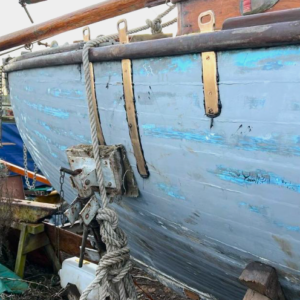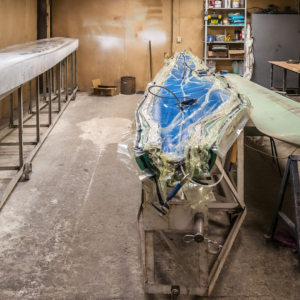How To: Fibreglass boat repair – a solid solution to delamination
Delamination is a common deck and hull construction problem which tends to get worse if left unattended. Eventually, it can reach a point where the overall structural integrity of the hull and deck may be compromised so it’s really important to know how to perform a high quality with this fibreglass boat repair.
Delamination is when the layers of fibreglass cloth and resin separate from each other or from the core sandwiched between the layers. It is usually caused by physical stress to the fibreglass surface which splits the surface skin and allows water to enter the laminate and travel into the core. It can also occur from repeated surface impact, even if the skin is not broken and water does not enter.
When an area is delaminated, it is substantially weaker and will feel soft when depressed. It’s essential that this type of damage is not ignored and is repaired as swiftly as possible to ensure your vessel maintains its structure.
Follow the steps below to return your surface to its former strength.
- Identify the delaminated area
If, when you put pressure on the skin, you can feel softness before reaching the core, this indicates the area has gaps between the skin and the core which need to be repaired. - Make sure the core is dry
Thorough drying of the core must be accomplished before re-bonding. Drill 6mm holes, 25mm apart and about 75mm beyond the delamination area. Drill through the skin and about ⅓ of the way into the core. - Mix epoxy
Add 409 Microsphere Blend to a WEST SYSTEM® epoxy Make sure it’s mixed to a ketchup consistency and then load into a syringe. Trim the syringe tip as necessary. - Inject epoxy
Inject the thickened mix into all holes drilled in the delaminated area. Work the epoxy into all areas between the skin and core. - Allow the epoxy to cure
Add pressure to the skin to force it into contact with the core until the epoxy cures. Placing a plastic sheet between the skin’s surface and the weights will prevent inadvertent bonding. - Replace damaged laminate
If the skin is damaged you will need to replace the damaged laminate after bonding the core. Use 450 g/m² biaxial glass tape with WEST SYSTEM epoxy to replace damaged laminate. Once this has cured, your surface should be solid once again.
If you’d like more advice on carrying out epoxy repairs, why not watch some of our how-to videos on the dedicated West System International support page?
Image credit: https://www.boatdesign.net/forums/fiberglass-composite-boat-building/major-overhaul-fiberglass-canoe-19550.html



